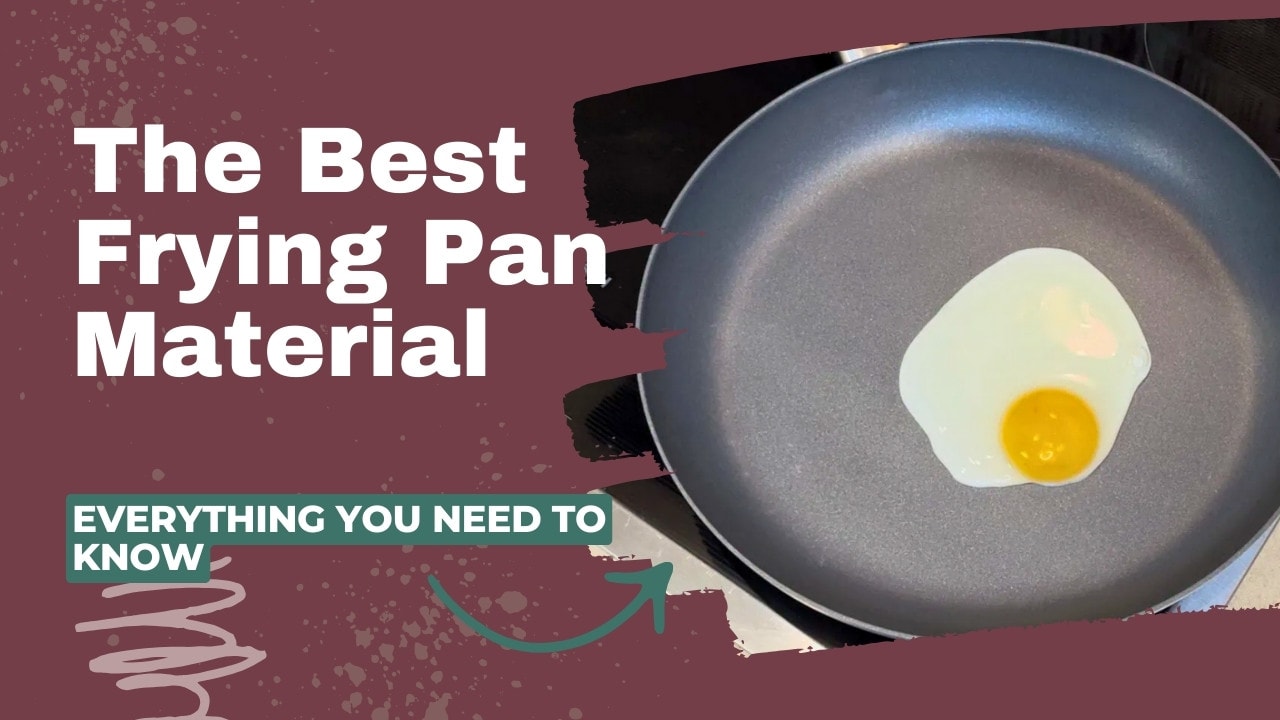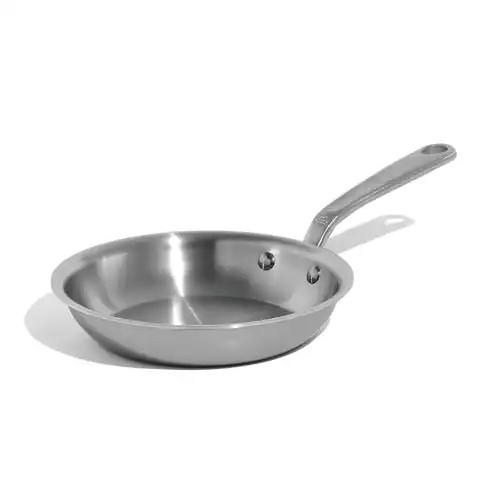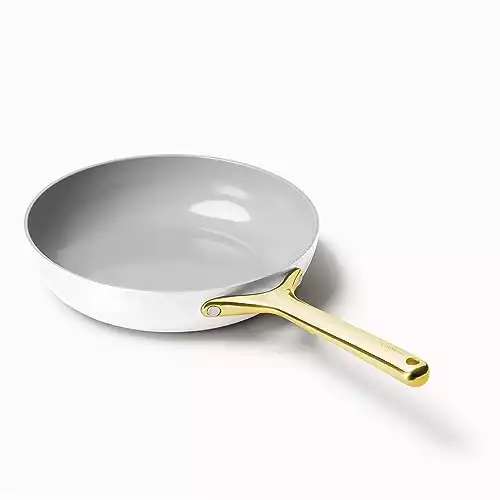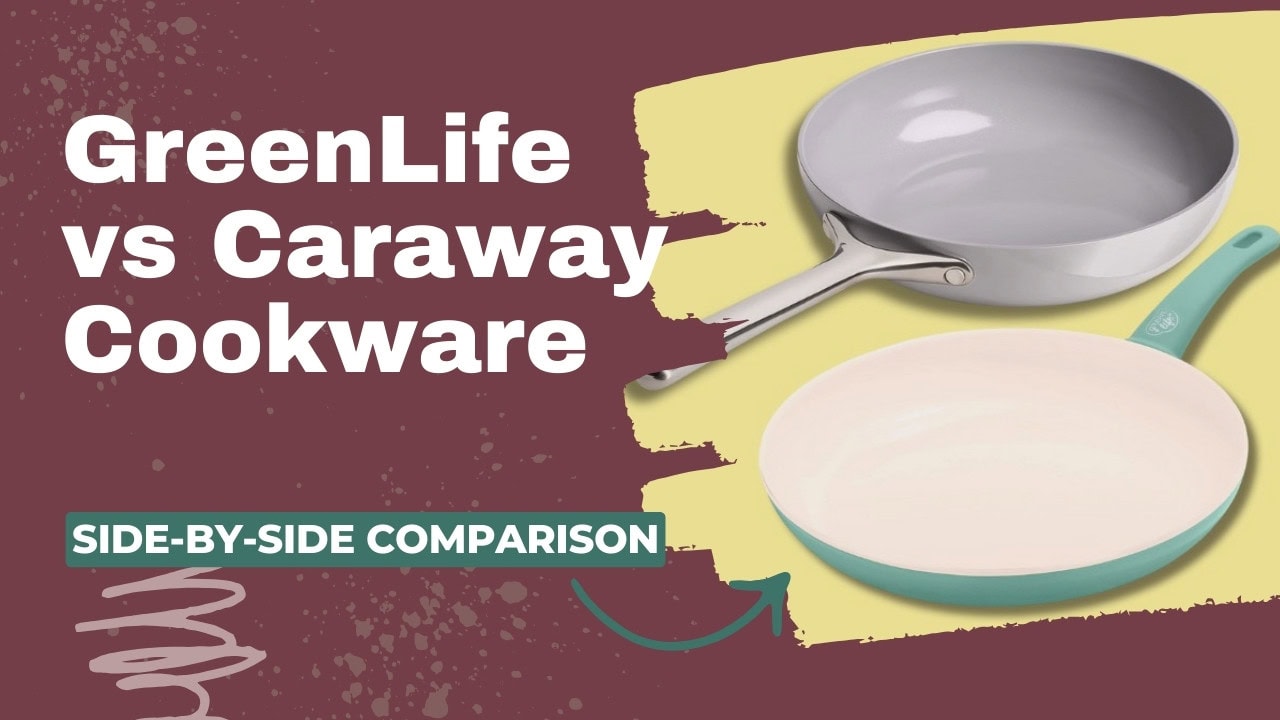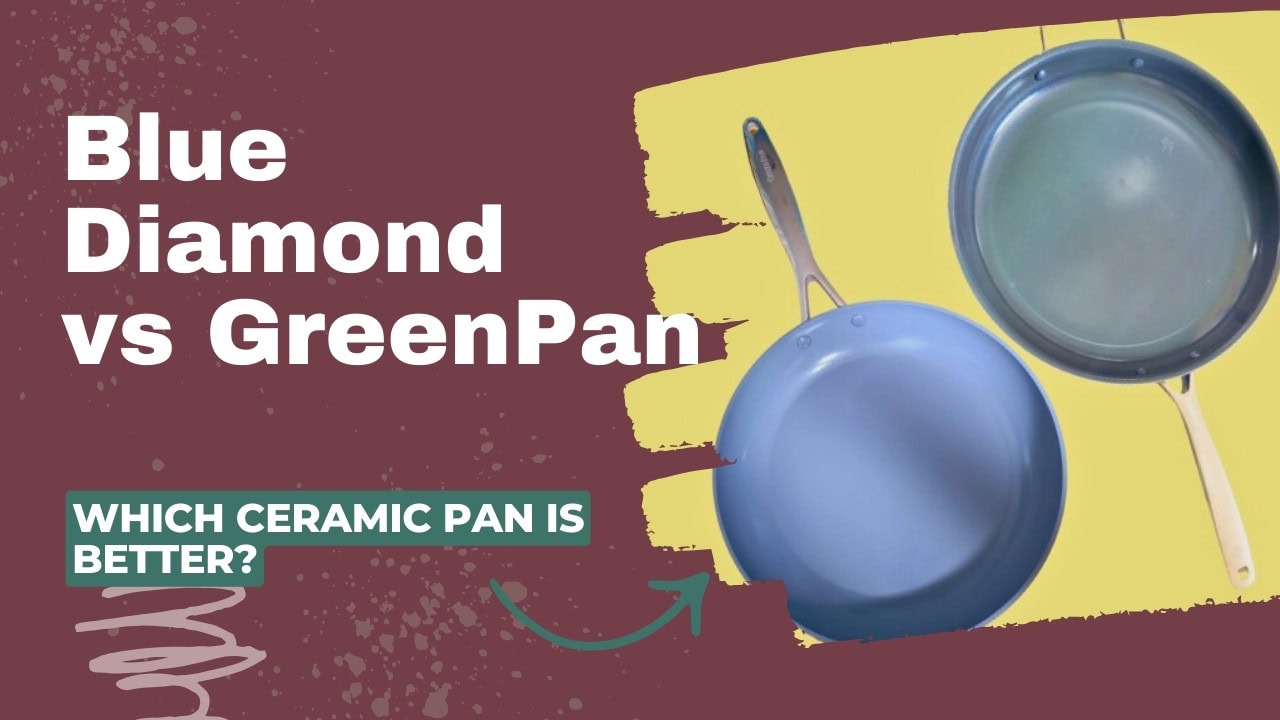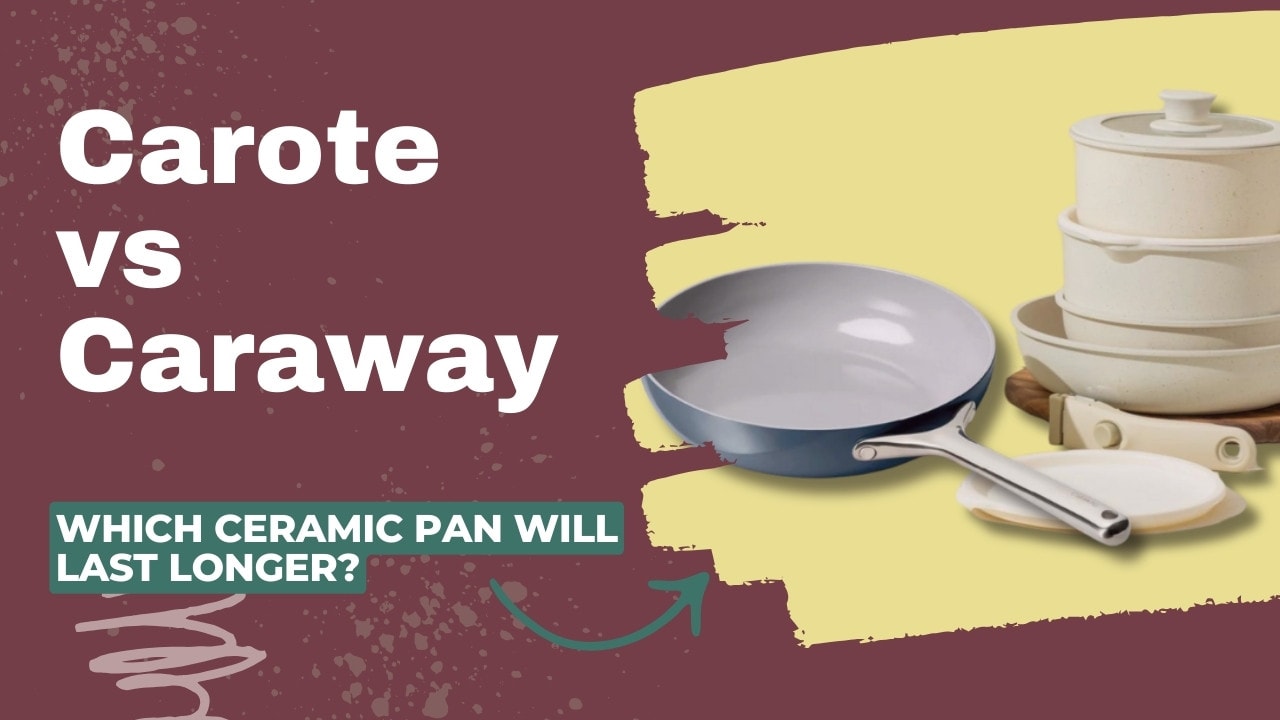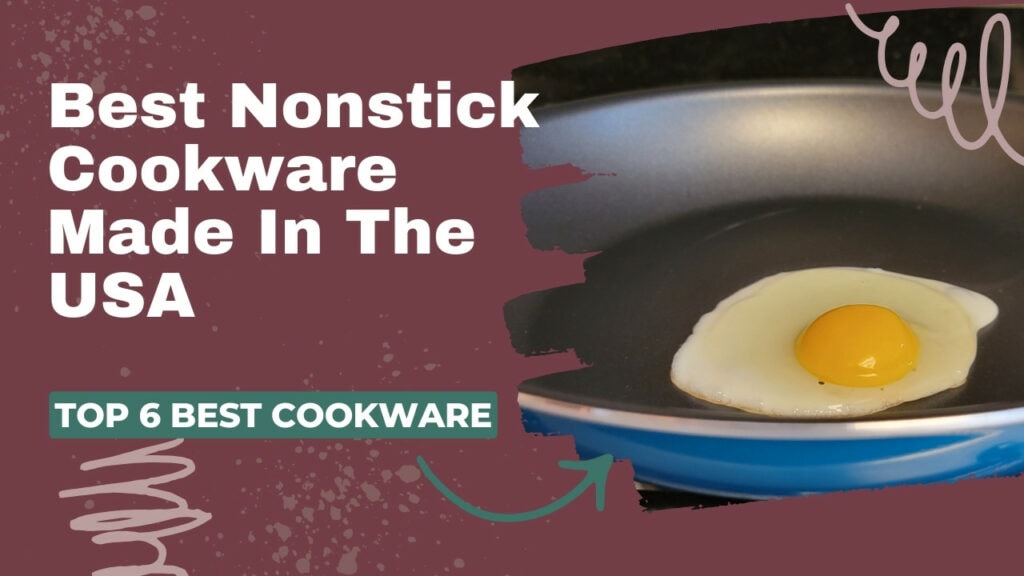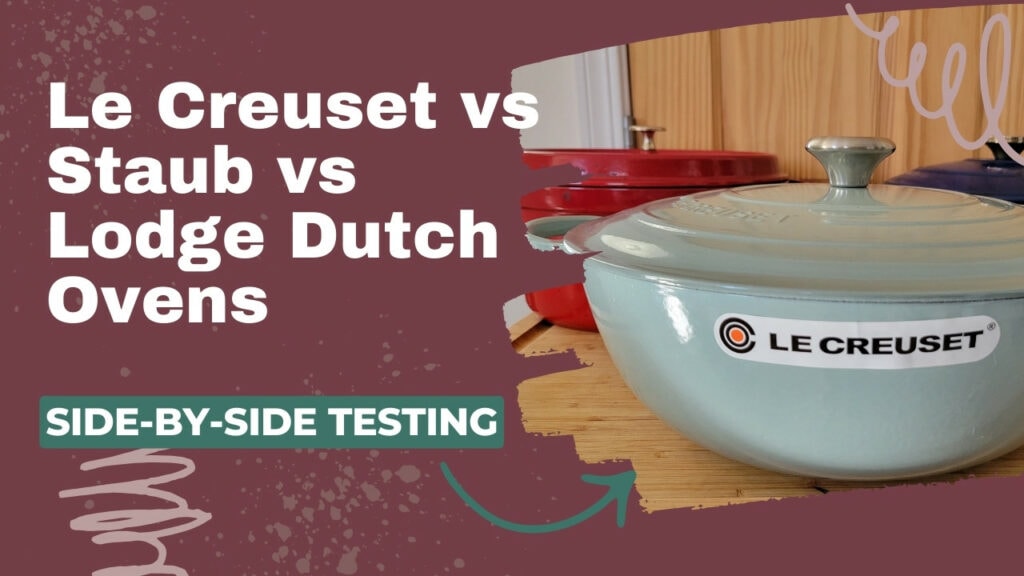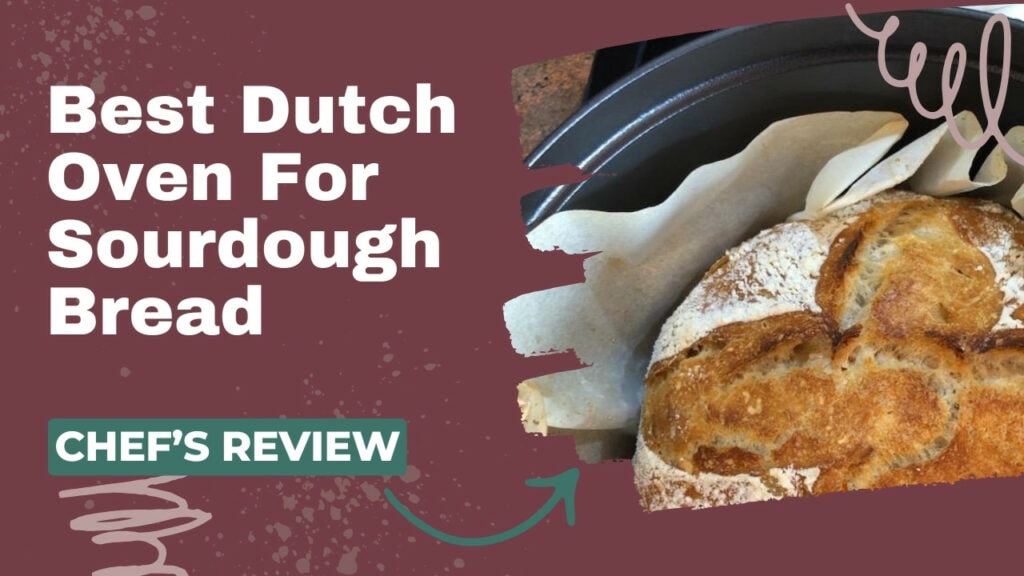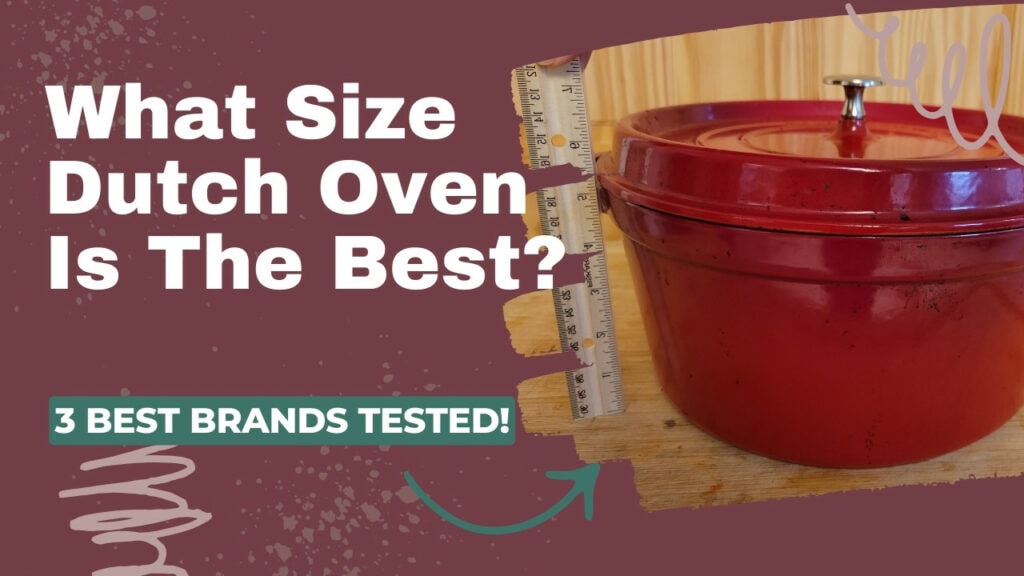We’re all looking to stretch our dollars as far as we can. That’s why we want our cookware to last. But we also want it to cook our food properly and suit our cleaning habits. So, what is the best frying pan material that checks all those boxes?
Ultimately – the best choice depends on you. Different cooking styles, ingredients you often use, and your commitment to caring for your cookware all impact its ability to serve you well. Our guide offers everything you need to know to help you select the best frying pan material for your home.
We’ll cover:
What’s the Best Material for Frying Pans?
Every kind of frying pan material has its own advantages. Cast iron is great for its longevity, stainless steel is low-maintenance and non-reactive, and nonstick pans are simple to use. Copper is the most responsive to temperature changes, making it best for fine cuisine. Ceramic nonstick is a plastic-free alternative to Teflon pans.
How to Choose the Best Frying Pan Material for Your Lifestyle
The type of frying pan material that’s best for you will heavily depend on your lifestyle. These factors include the number of people you cook for, how much time you have to spend cleaning, and whether you’ve “gone green.”
Best Frying Pan Material For People With Families
If you’re cooking several meals daily for several people, you’ll want something long-lasting and durable. Stainless steel and cast iron cookware stand the test of time.
Best Frying Pan Material For People Who Don’t Like to Clean
If you’re not interested in putting a lot of elbow grease into cleaning your frying pans, you’ll find that ceramic nonstick-coated pieces offer easier cleanup. Food slides off these pans – at least when they’re new – so you won’t have to spend time scouring.
Best Frying Pan Material For Distracted Cooks
Carbon steel is one of the best choices for those who leave their pans on the burner too long. This frying pan material is known for being able to withstand high temperatures. You can even put certain types in the oven.
Best Frying Pan Material For the Health Conscious
A ceramic nonstick frying pan can help you keep to your low-fat diet. That’s because it requires less butter or oil when cooking to keep your food from sticking to the pan. Of course, Teflon pans are great for low-fat cooking as well, but there is a complex debate on the safety of this type of cookware.
Best Eco-Friendly Frying Pan Material
If you want to select a frying pan that’s better for the environment, consider cast iron, stainless steel, or carbon steel. These materials are viewed as environmentally friendly since they are more likely to be recyclable and have a long lifespan.
Pros and Cons of Different Frying Pan Materials
Stainless Steel
Pans are never made of pure stainless steel. Steel is a poor conductor, so it is always layered with aluminum or copper in either a multi-ply or impact-bonded design.
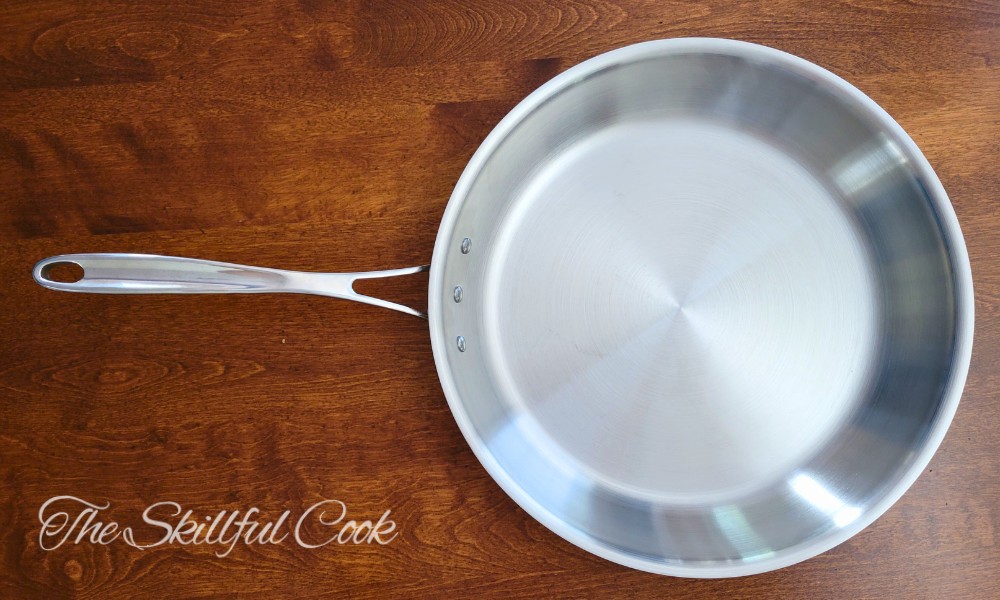
Pros:
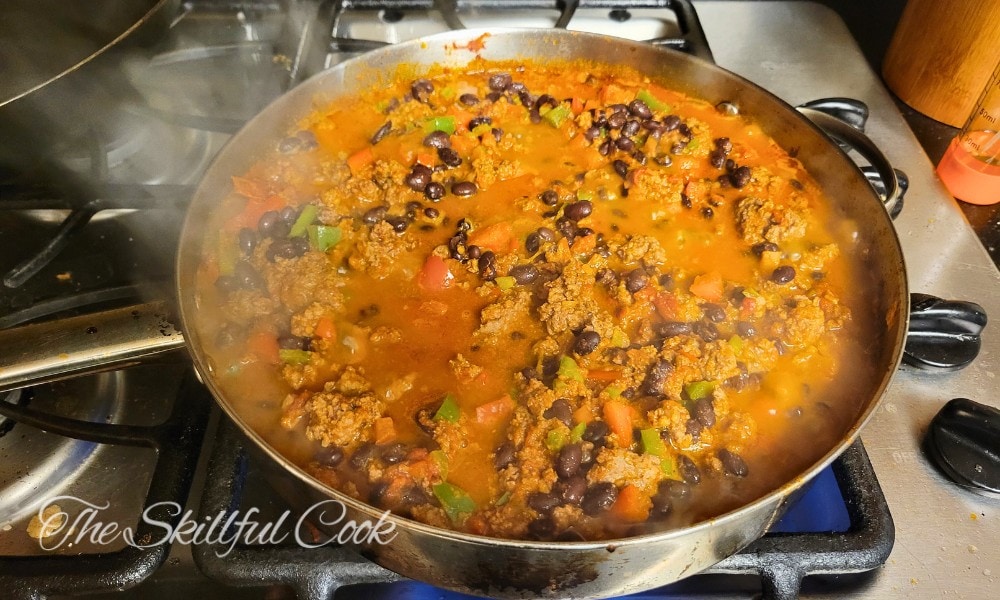
Cons:
Best For:
Stainless steel frying pans are often found in restaurants and commercial kitchens used by professional chefs. But serious home cooks are also fans of this cookware material. This is because it can be used for boiling, simmering, frying, searing, and sautéing.
Exploring Stainless steel in more detail: Why Use Stainless Steel Cookware?
Traditional Nonstick
Nonstick pans typically have an aluminum base coated in one (or several) layers of nonstick Teflon. (Even if they don’t use branded Teflon, it will be a similar compound known as PTFE.) The PTFE may be infused with titanium or other elements for durability or marketing appeal.
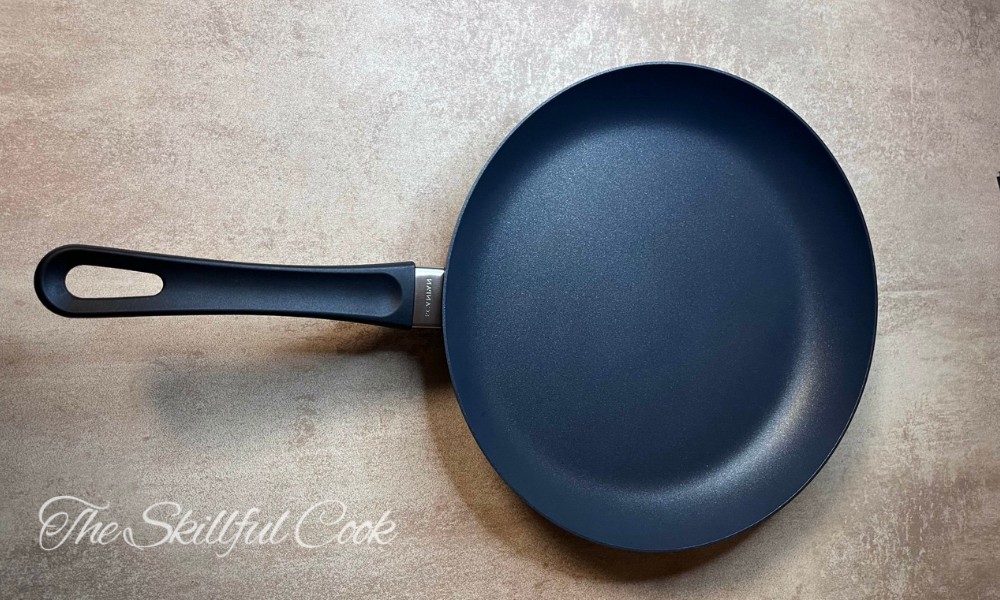
Pros:
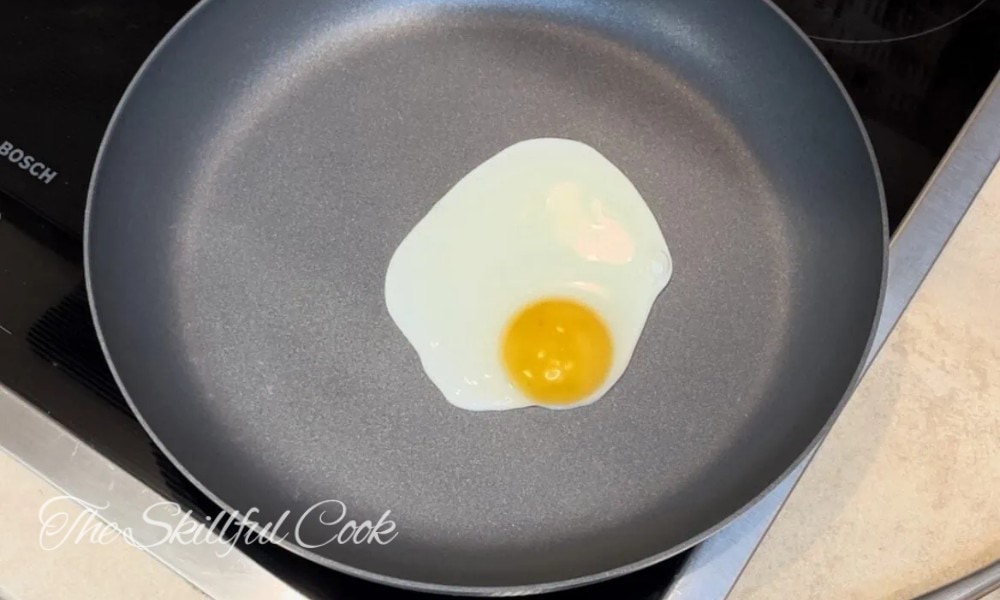
Cons:
Best For:
Traditional nonstick pans are great for cooks who are always on the go. They are affordable and easy-to clean, lightweight, and allow you to cook without much fat. However, those who like to cook on high heat or who have concerns about using plastic in the kitchen will want to choose a different option.
Wondering if Traditional Nonstick cookware is a healthy choice? Check out this comprehensive guide.
Ceramic Nonstick
Ceramic nonstick pans also have an aluminum or stainless steel base. But instead of being coated in Teflon, they are coated in a newer technology called sol-gel ceramic.
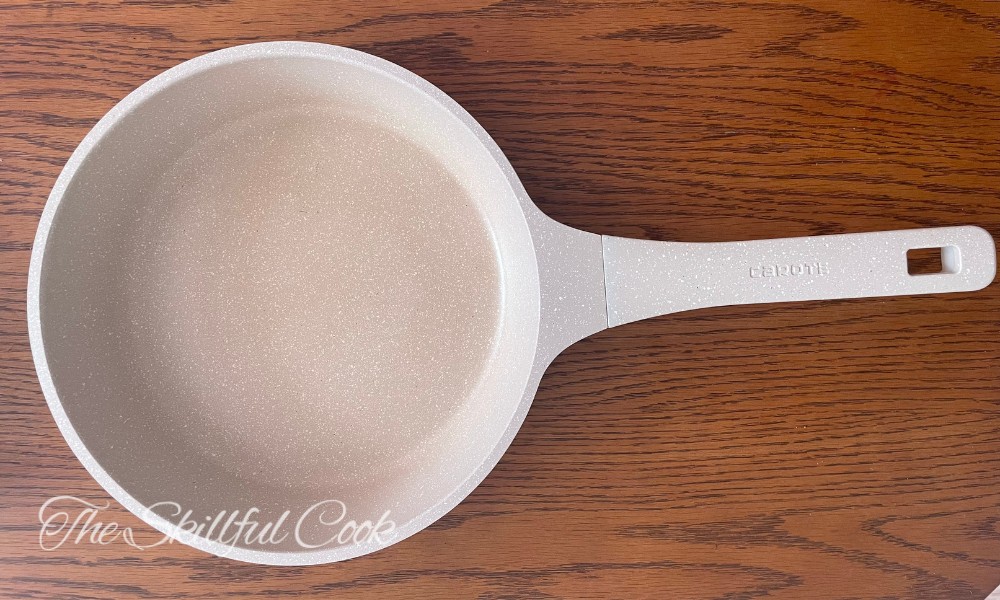
Pros:
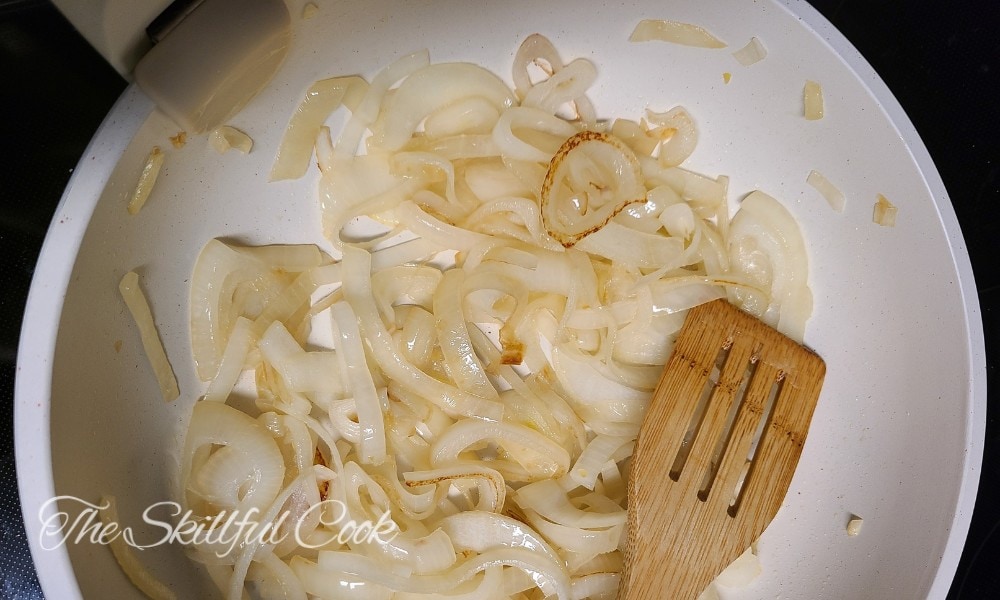
Cons:
Best For:
The ceramic nonstick coating on these frying pans makes them forgiving and great for beginner cooks. They are also excellent for those who cook lighter diets and favor easy cleanups.
Wondering how long ceramic pan will last? Check out this article for tips!
Carbon Steel
Carbon steel is extremely popular in Europe, and gaining traction in the United States. This metal pan is made of 98-99% iron, so it needs to be seasoned with oil to prevent rust.
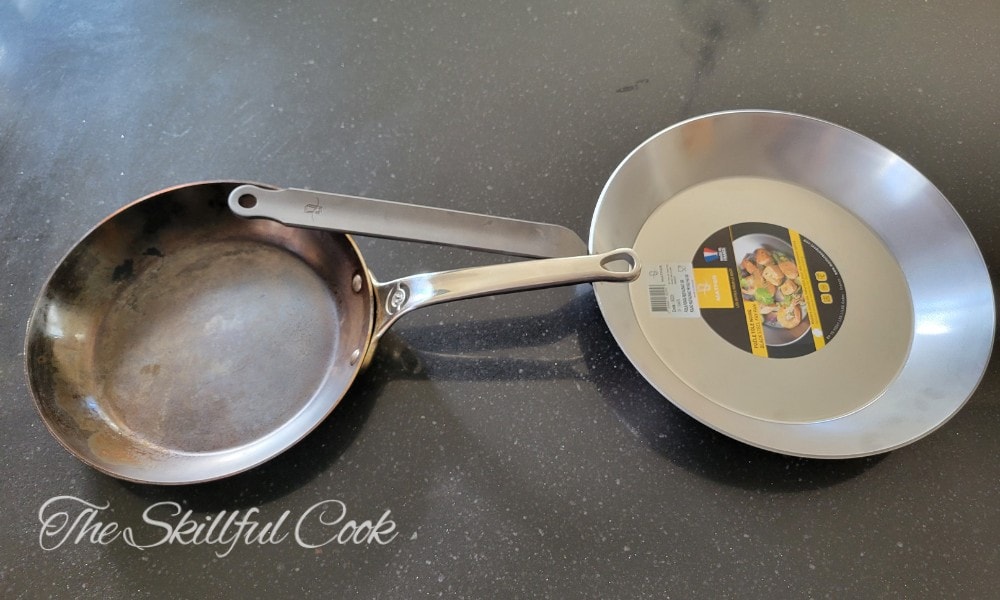
Pros:
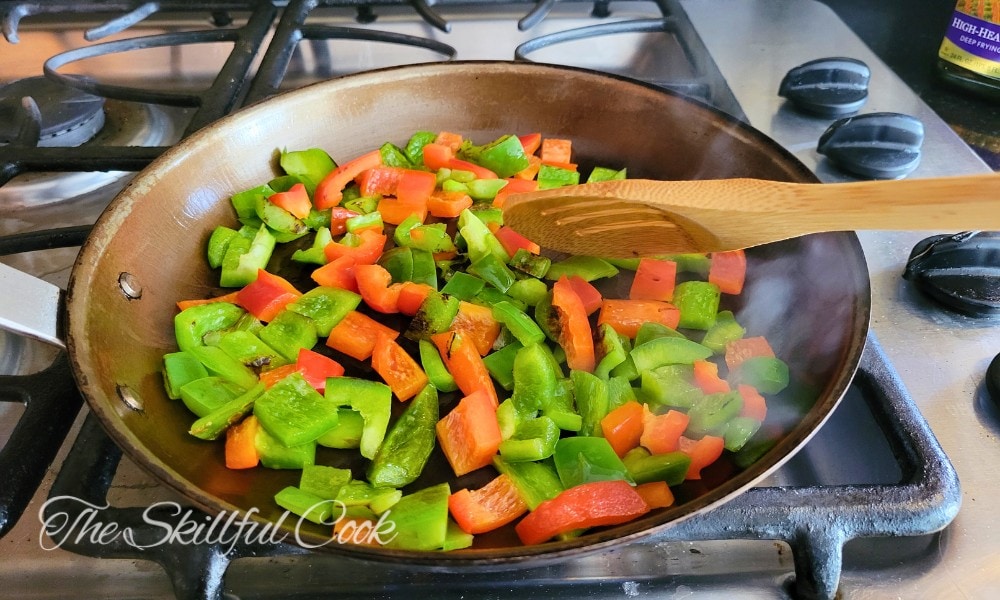
Cons:
Best For:
Carbon steel pans are ideal for chefs who want to value heat control and retention. You’ll find them in the kitchens of professional chefs and amateur cooks who want a powerful cooking tool and don’t mind its upkeep.
The versatility of this pan might surprise you. Find out why in our All About Carbon Steel Pans article.
Cast Iron
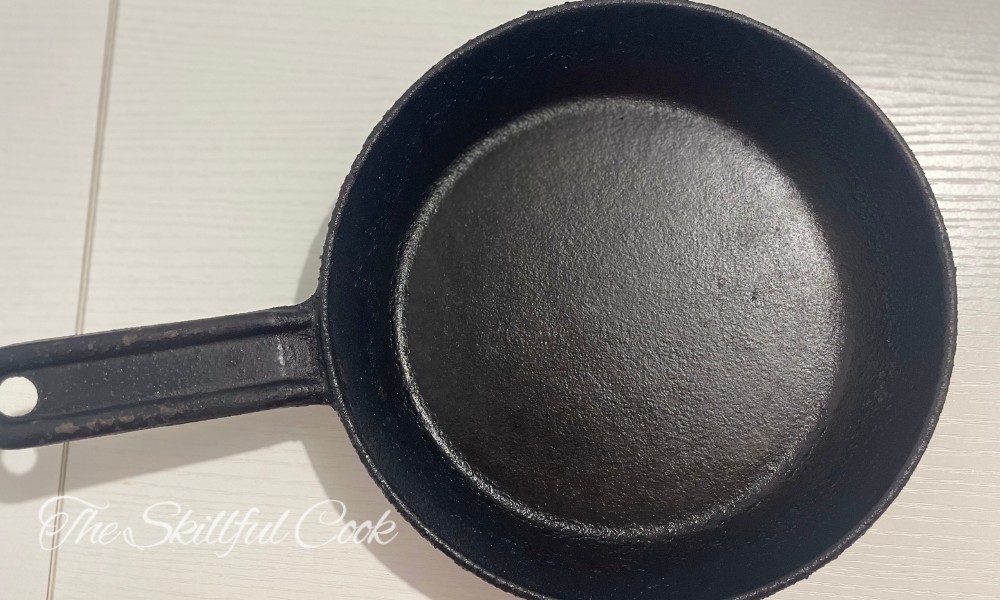
Pros:
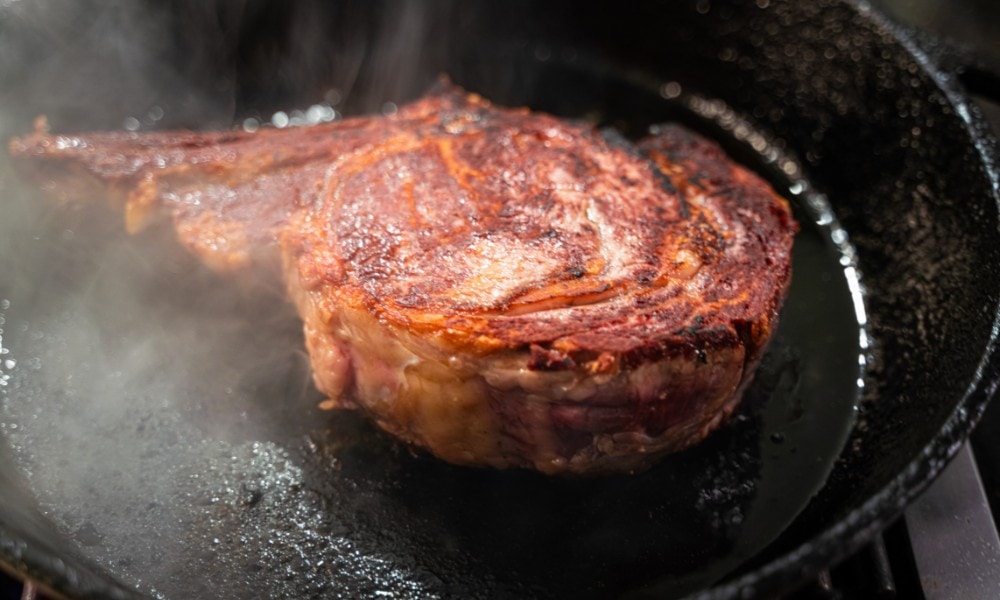
Cons:
Best For:
Cast iron pans are best suited for cooks who take pride in their cookware and are willing to invest time in maintenance. They are ideal for those who cook on high heat or grills and appreciate the ability to transition seamlessly from stovetop to oven. Since they have no synthetic coatings, they are popular with health-conscious home chefs.
For American-made cast iron, check out this roundup!
Enameled Cast Iron
Enameled cast iron was invented by the Le Creuset company, and remains synonymous with that famous French brand. Though it’s often found in the shape of Dutch ovens, you can also get enameled cast iron fry pans. They are made of cast iron and coated with colorful porcelain enamel.
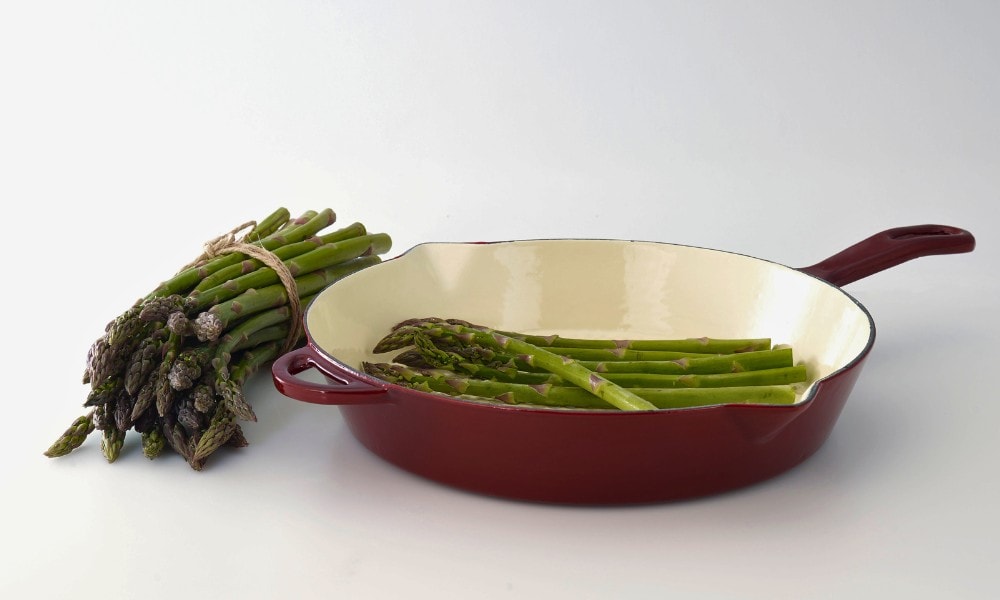
Pros:
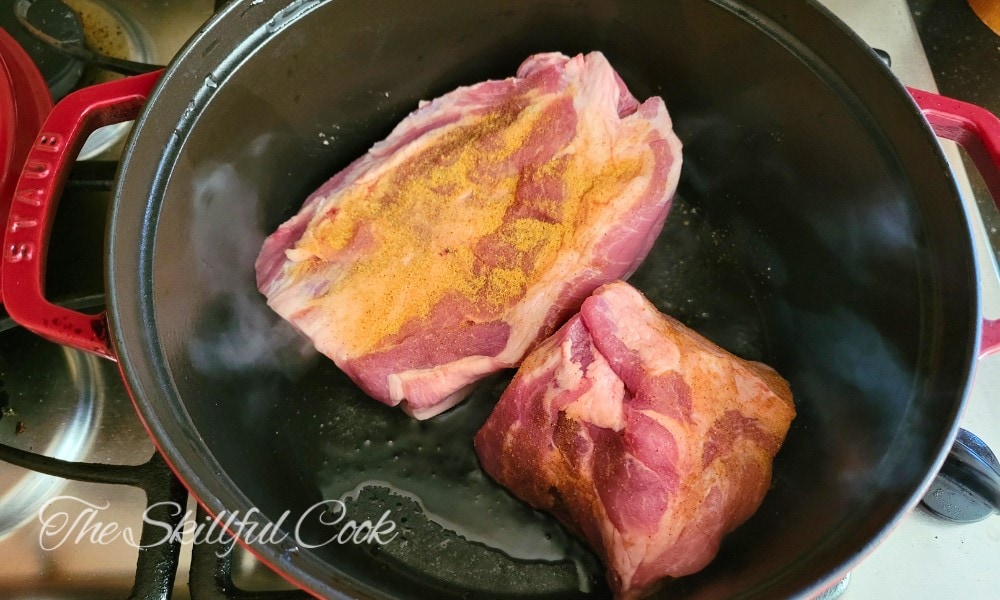
Cons:
Best For:
Enameled cast iron cookware is best for chefs looking for a stylish pan that’s easy to clean and has a non-reactive surface.
Curious about enameled cast iron? Learn more here.
Copper
Copper fry pans are favored by French chefs and culinary experts across the world. No other material commonly used for cookware is as sensitive to temperature changes as copper.
Pros:
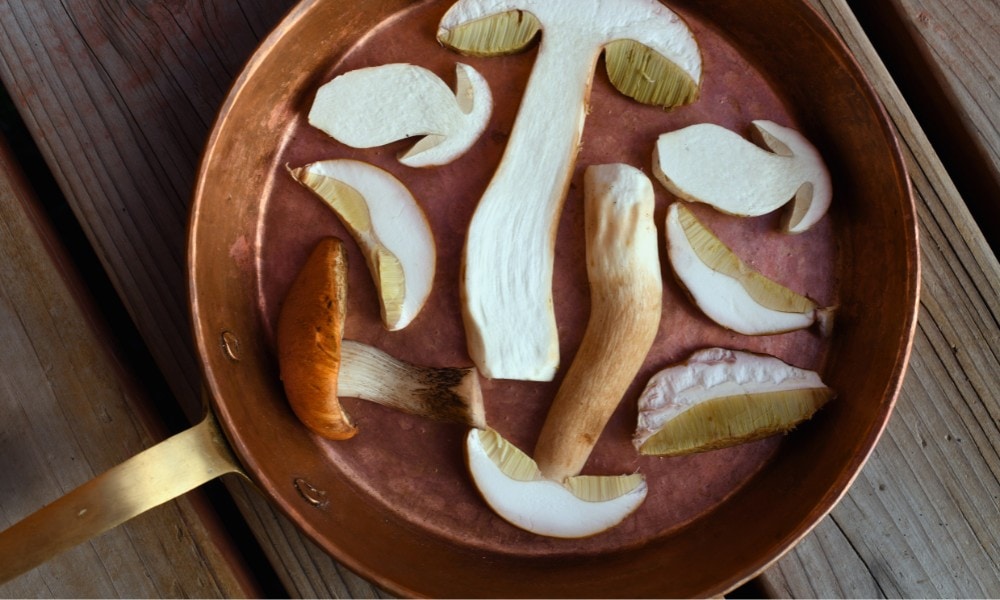
Cons:
Best For:
Copper cookware is not for beginner cooks. Since copper is susceptible to temperature changes, you have to be very aware and agile when cooking to avoid burnt and sticky messes.
Want pro-quality copper pans? This guide has you covered.
More Things to Think About When Picking a Fry Pan
Choosing the best material for your fry pan is a great place to start! But here are some other factors you’ll want to consider when fry pan shopping.
Size
Frying pans typically come in sizes between 6 and 16” and are measured from rim to rim. Your ideal size will depend on how many people you’re cooking for or if you’re cooking a dish that needs a lot or a little room.
Larger pans can cook more food without crowding. Smaller pans will distribute heat more efficiently and get hotter faster.
Handle
It’s essential to know what type of handle your frying pan has if you want to use it in the oven. Metals like stainless steel or cast iron can get hot on the stovetop and burn your hand, whereas wood or a silicone-covered handle is a little safer. A wood handle, however, won’t be as long-lasting as stainless steel. Some pans have handles made from bakelite, which is a plastic resin.
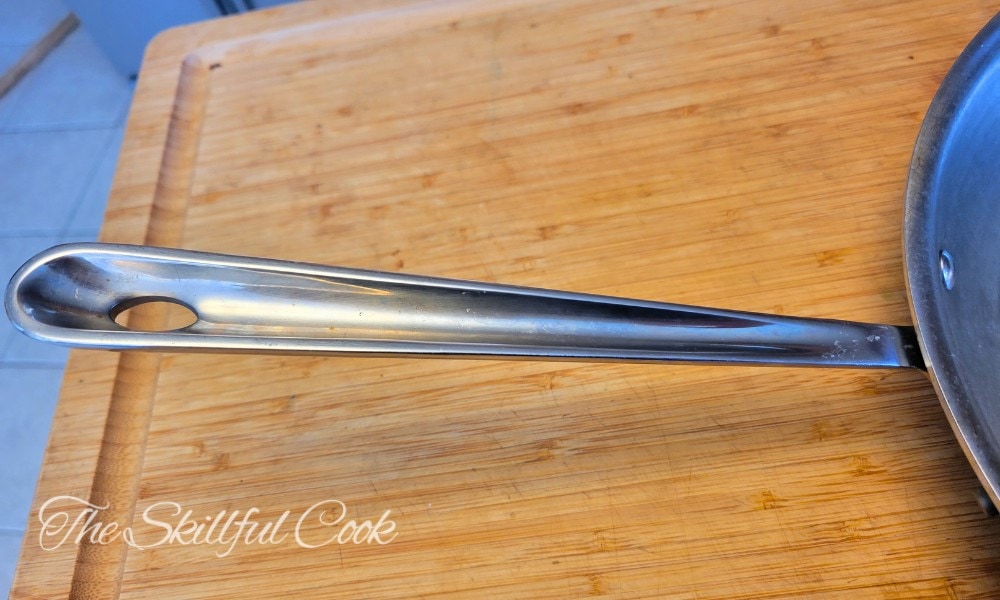
Weight
Cooking with a lighter-weight pan gives you a more comfortable range of motion when cooking.
Favorite Products
While a wide range of quality frying pans could suit your needs, we’ve selected some of our favorites to help make your research go more smoothly.
Best Stainless Steel Frying Pan
Best Ceramic Nonstick Frying Pan
If you’re looking for something moderately priced, you’ll want to try GreenPan’s Paris Pro hard Anodized Healthy Ceramic Nonstick 10” Frying Pan that’s a breeze to clean and is easily maneuverable due to its aluminum build.
Frequently Asked Questions
Are nonstick or uncoated frying pans better?
A nonstick pan cleans easily and works great for lighter dishes, but it might last only a few years. Uncoated pans like stainless steel or cast iron are more durable and better suited for high-heat cooking but require more maintenance.
What’s the healthiest material for fry pans?
The healthiest material for a frying pan depends on your criteria. If you want to avoid Teflon coatings, try ceramic nonstick, Xtrema pure ceramic, or stainless steel. If you are looking for a pan without aluminum or nickel, try cast iron or carbon steel.
What are the best brands of frying pans?
All-Clad, Le Creuset, Lodge, Calphalon, and Made In are all reputable companies that sell top-quality frying pans suitable for home use. At the Skillful Cook, we have used and reviewed most of these brands. With frying pans, honestly, you get what you pay for. Cheap brands will not last as long as investment pieces.
What frying pans do Michelin chefs use?
Go-to brands for top chefs with Michelin stars frequently include Mauviel, Demeyere, and Matfer Bourgeat. These top-of-the-line brands are known for exceptional quality, durability, and precise heat control. They are made of responsive metals like copper and carbon steel.
What’s the best material for high-heat cooking?
Stainless steel is best for cooking with high heat. Its sturdy construction and consistent heat distribution make it withstand the heat of rigorous cooking techniques such as searing and browning.
What frying pan material is best for eggs?
Did you know you can successfully cook eggs in any kind of frying pan? If you want fat-free frying, you’ll need to use a pan with a PTFE or ceramic nonstick surface. But if you’re willing to learn to use the right temperature and the right amount of oil, you can get a fantastic fried egg or delicate omelet even in cast iron or carbon steel.
What material is best for deep frying?
Cast iron wins as the best pan for deep frying, as its ability to retain heat helps to ensure consistent temperatures. Stainless steel is a good alternative if you don’t have a deep cast iron fry pan.
Conclusion
Different factors, such as your cooking methods and personal preferences, will determine the best frying pan material for your kitchen. Each material has pros and cons, and we appreciate them all here at the Skillful Cook!
Don’t hesitate to comment if you have any more questions.

